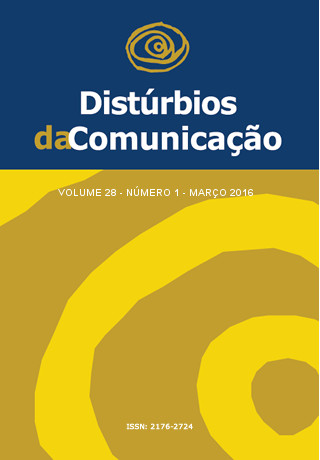Temporal ordering and auditory attention related with hemoglobin concentrations in adolescents
Keywords:
Electrophysiology, Attention, Adolescent Nutrition, Hearing, Hemoglobins.Abstract
Introduction: Anemia can cause changes in temporal ordering as well as in auditory attention, important factors in the process of learning process and language acquisition. Purpose: To evaluate the association between concentrations of hemoglobin and Temporal Ordering and Auditory Attention in adolescents. Methods: Series study, involving 17 adolescents with inadequate hemoglobin concentrations compared with a control group of 17 adolescents with adequate hemoglobin concentrations, aged 13-18 years and 11 months, of both sexes, attending public schools. It was evaluated hearing abilities of use pitch pattern test and P300, hemoglobin concentrations, nutritional status and socioeconomic and demographic characteristics. Results: The inadequate hemoglobin concentrations were not associated with auditory skills, when adjusted for nutritional status and socioeconomic and demographic characteristics. The concentrations of hemoglobin were found to be at low levels, considered as mild anemia. Temporal ordering presented were more changed in the adolescents with inadequate hemoglobin concentration. The average latency of the P3 component in adolescents with inadequate hemoglobin levels was lower in those with higher age, higher educational level, higher socioeconomic status and registration of repetition. Conclusion: Mild anemia does not cause deleterious effects on abilities of temporal ordering and auditory attention. Investigations with larger numbers of cases and other levels of anemia are recommended to test this association.Downloads
Metrics
Downloads
Published
Issue
Section
License
Copyright (c) 2016 Elisângela Barros Soares -Mendonça, Lilian Ferreira Muniz, Mariana de Carvalho Leal, Ilma Kruze Grande de Arruda, Alcides da Silva Diniz

This work is licensed under a Creative Commons Attribution 4.0 International License.









